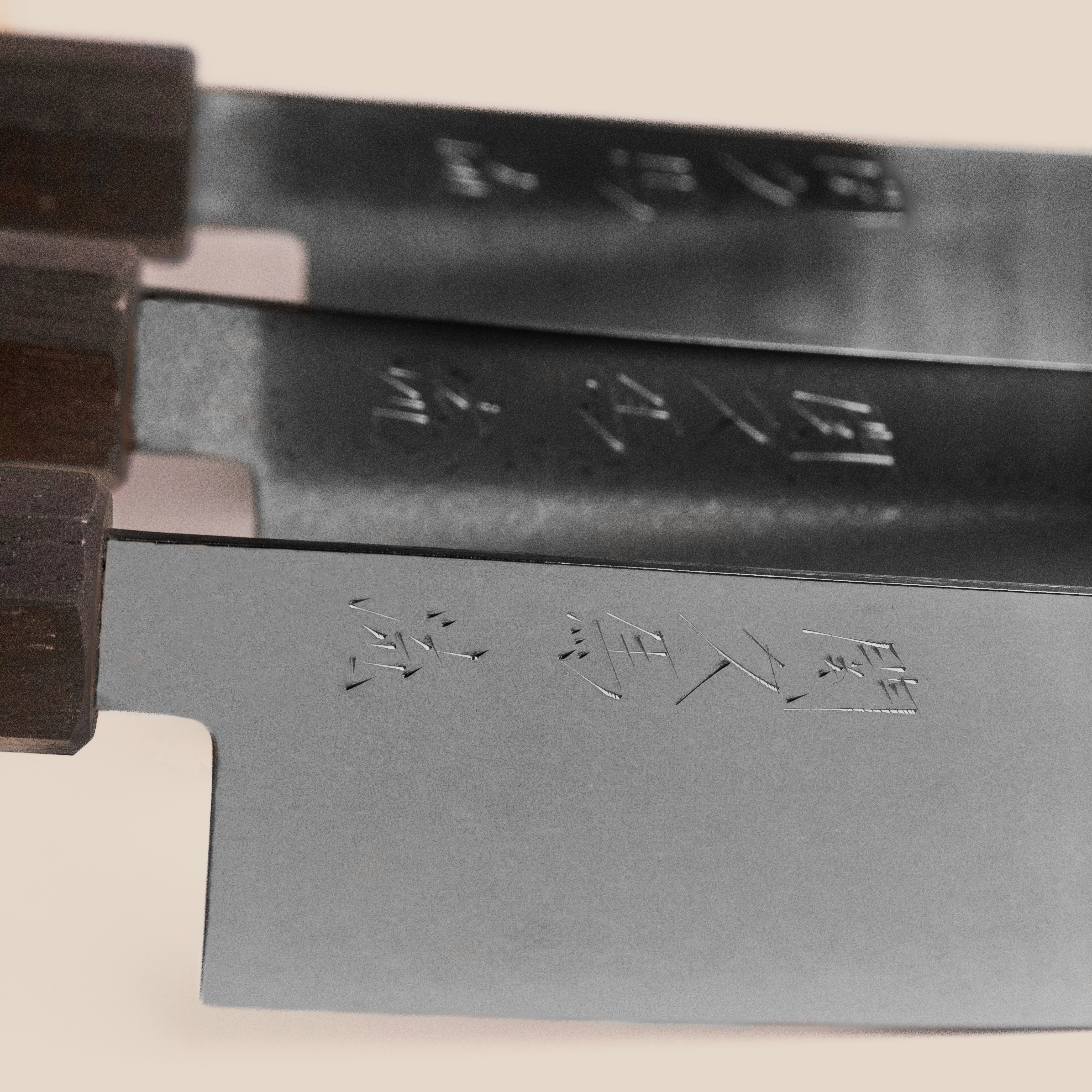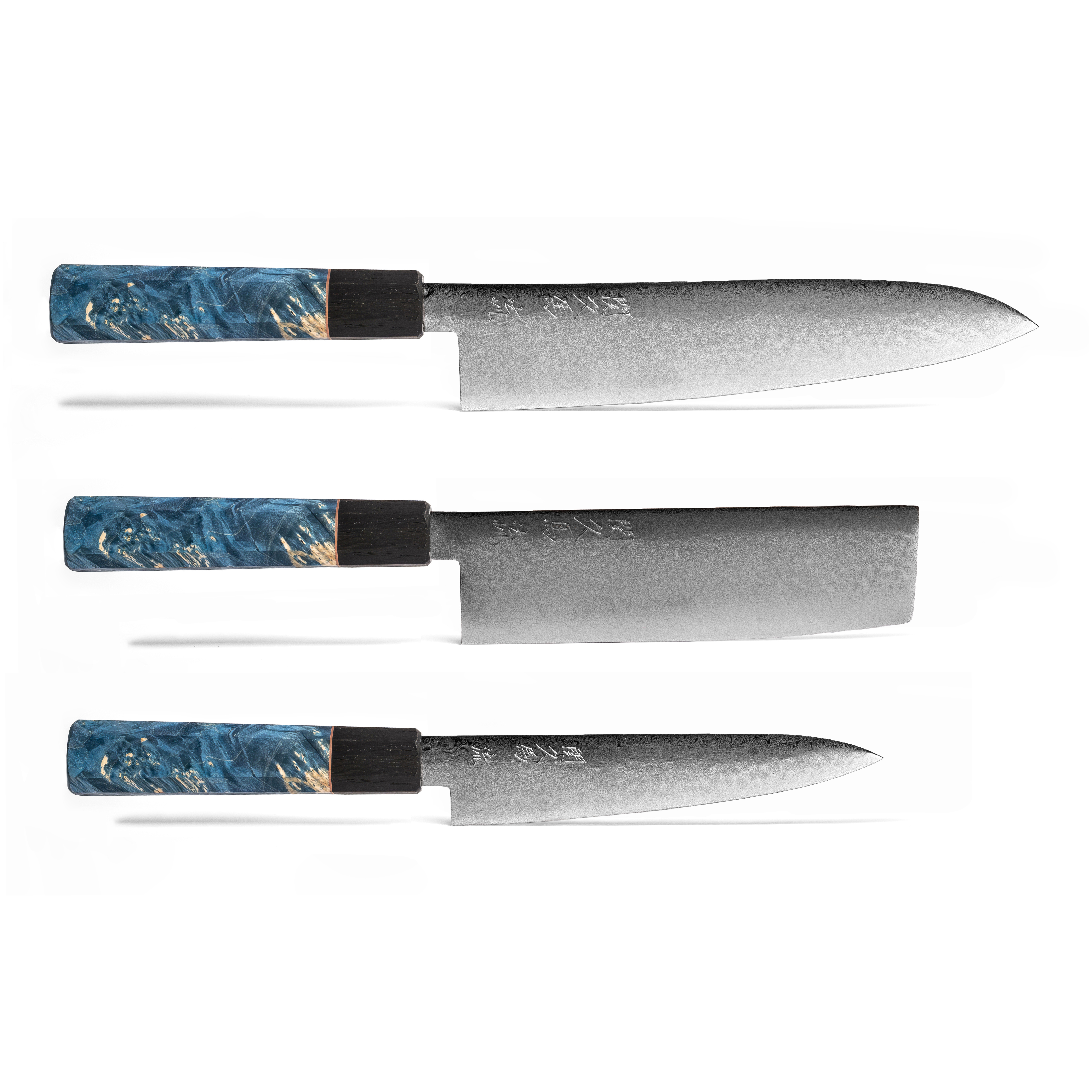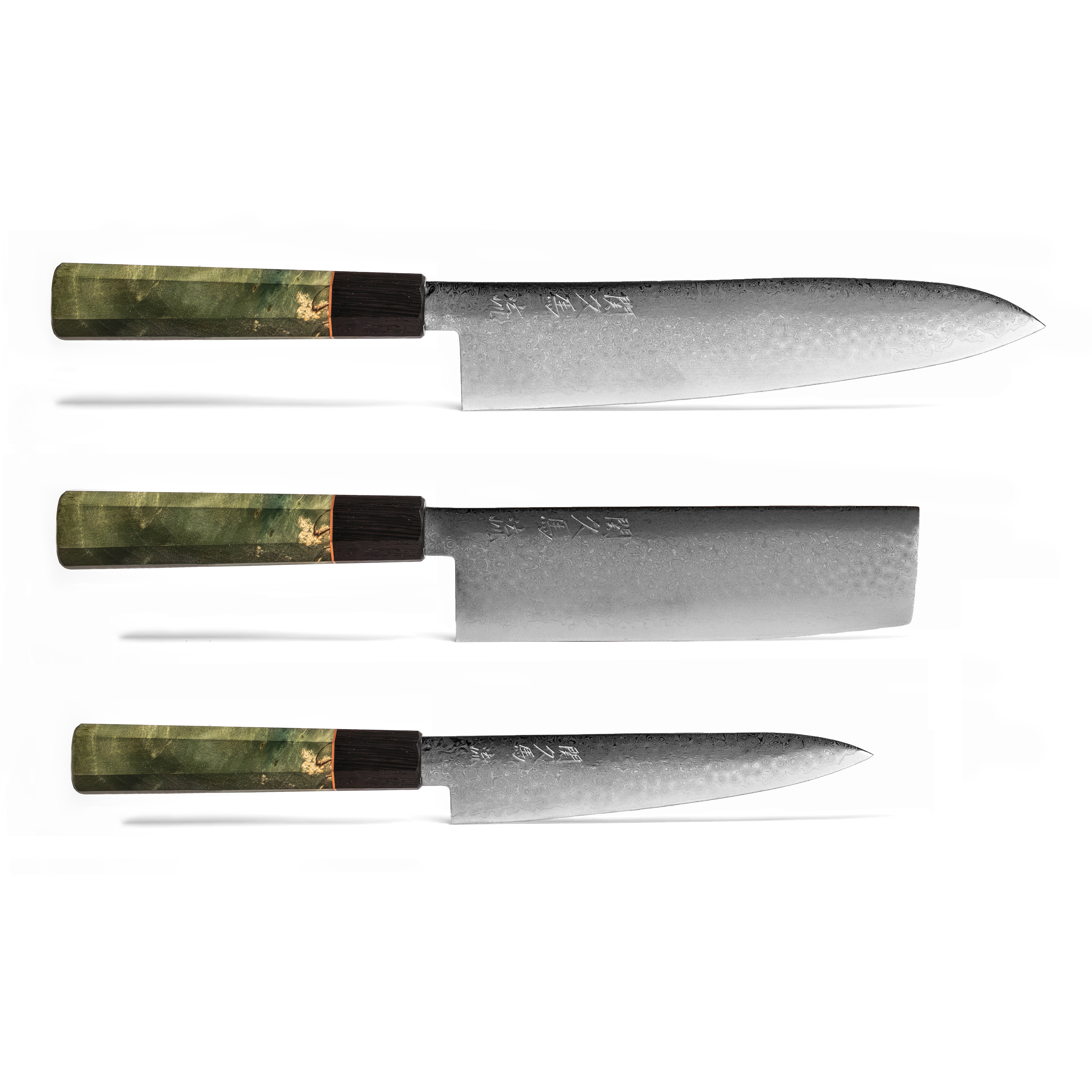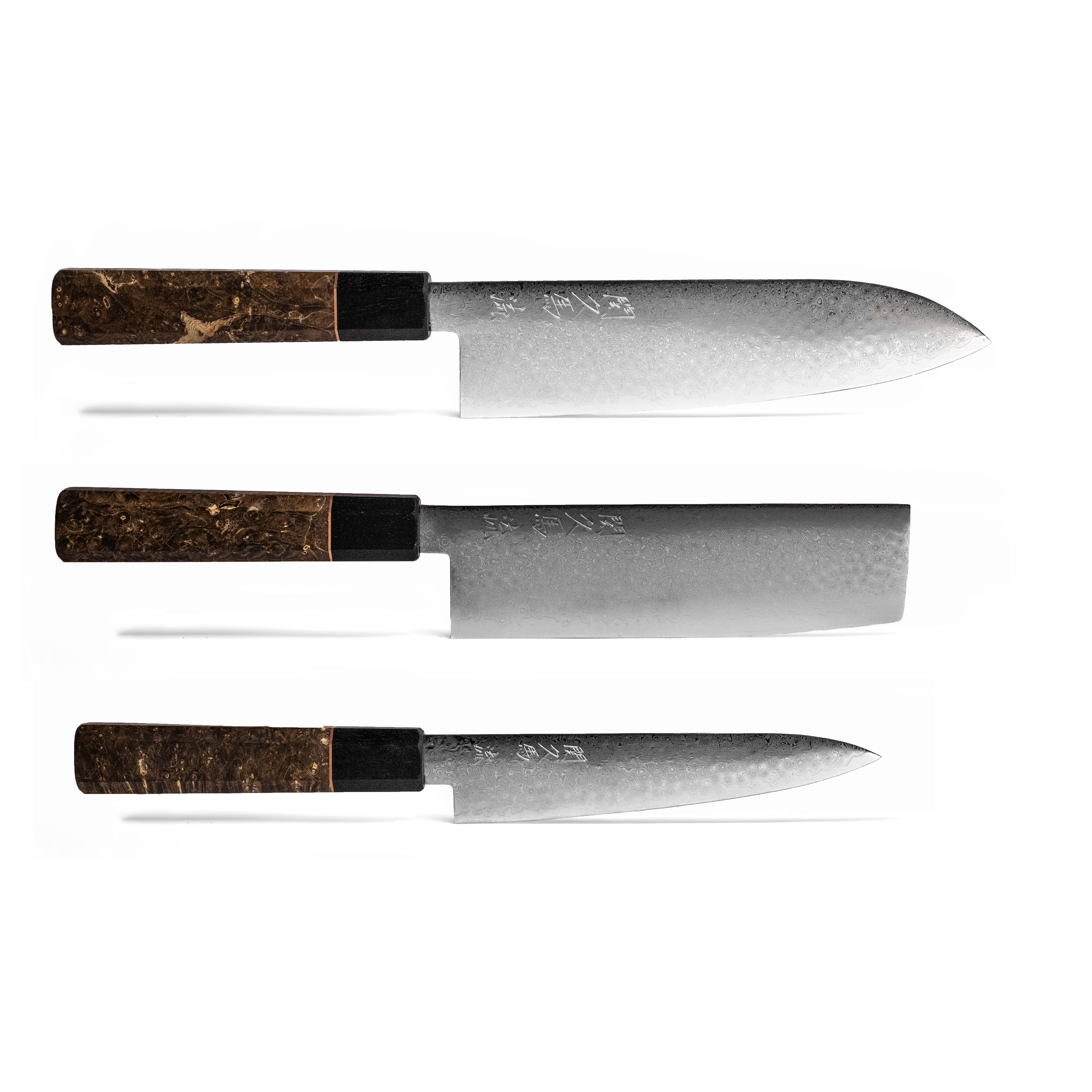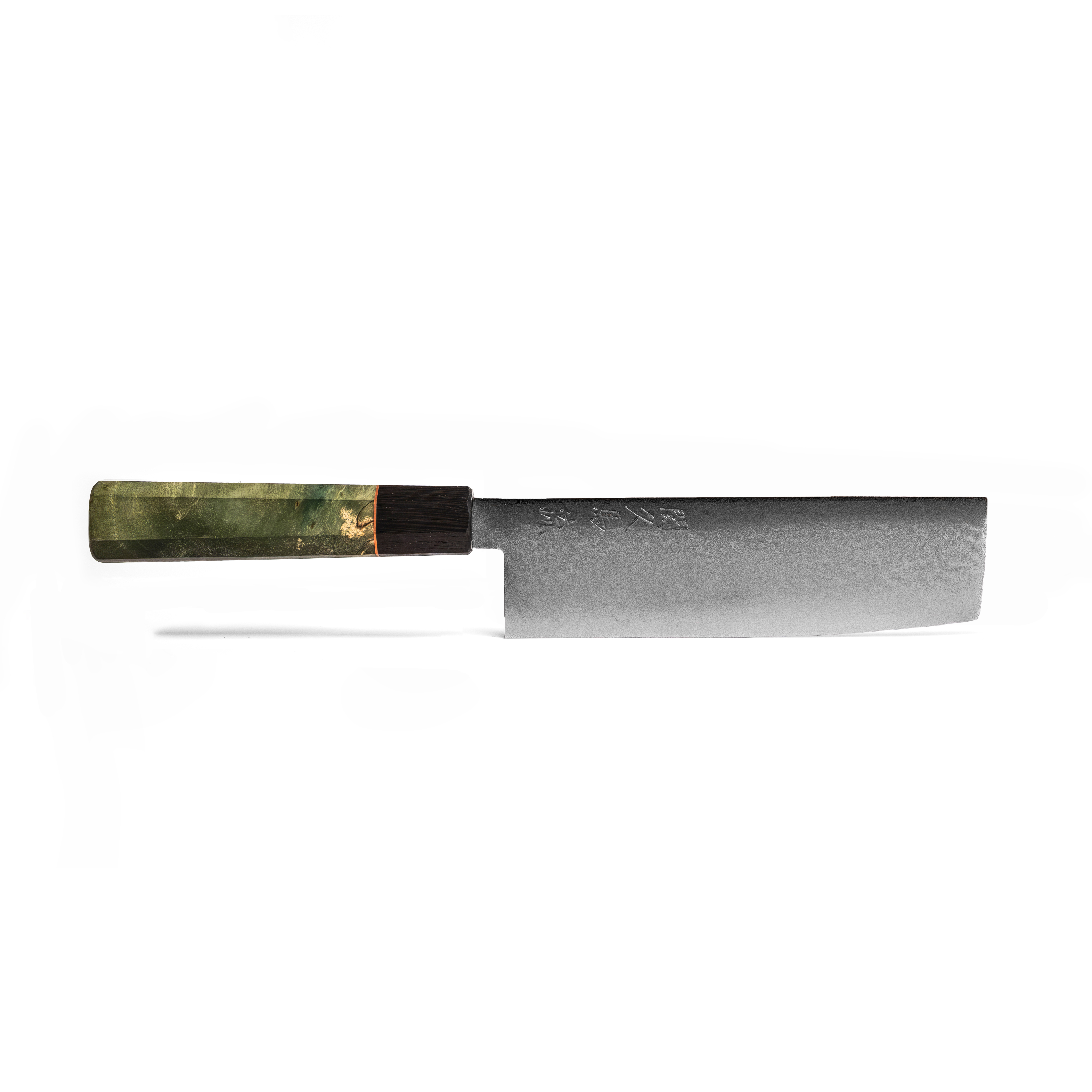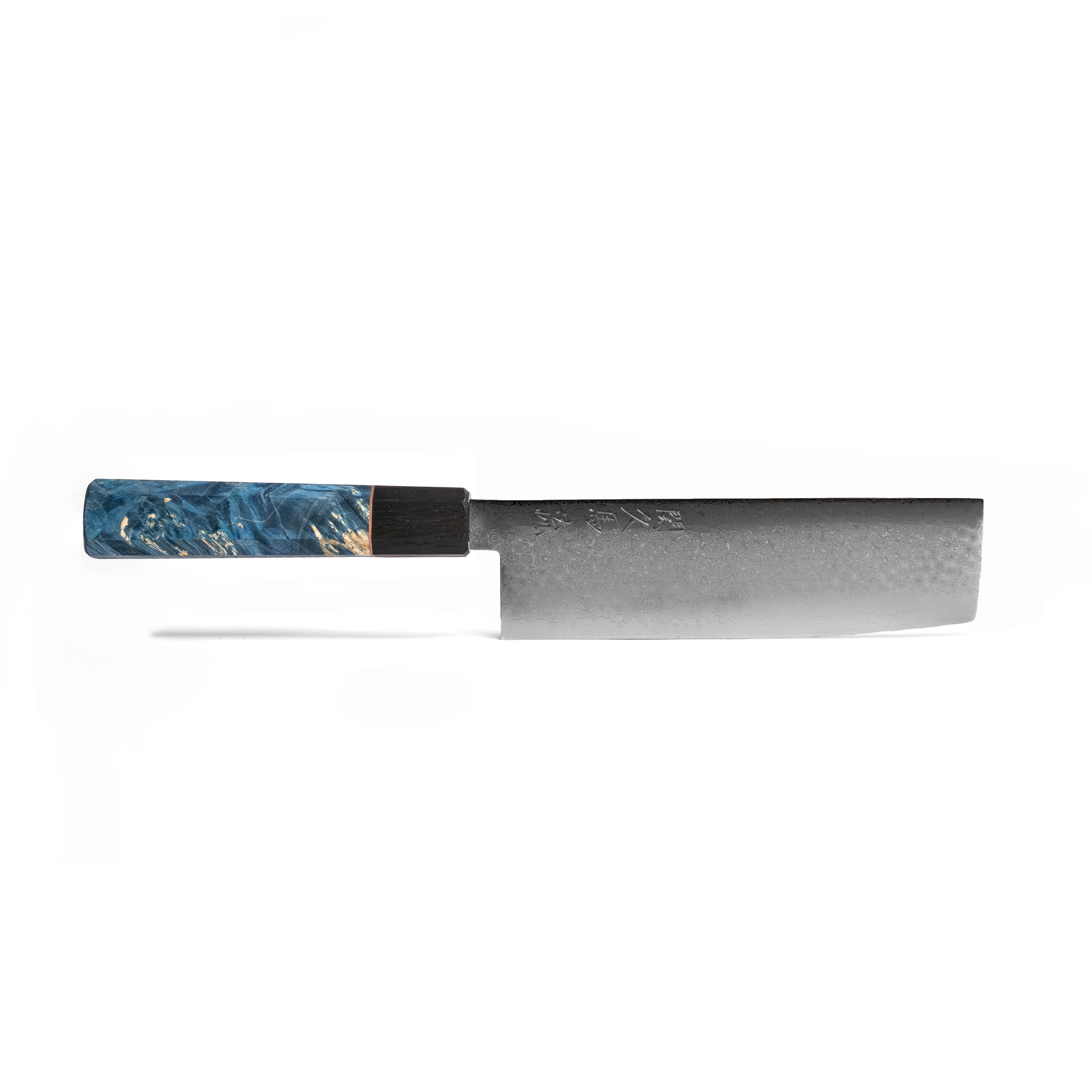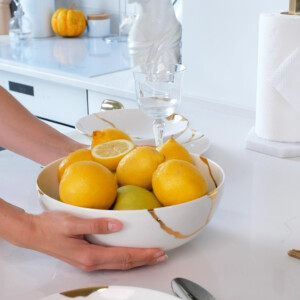Among the vast family of Japanese knives, the Nakiri (菜切り包丁) holds a special place — particularly among chefs who value precision, ease, and beauty in vegetable prep. Its simple, clean lines and purpose-built design make it a beloved tool in kitchens around the world.Whether you’re a professional or a passionate home cook, the Nakiri invites you to rediscover vegetables as more than an ingredient — as a culinary canvas. If you’ve ever wondered why chefs reach for it so often, read on. You’ll also see why Oishya’s Nakiri-inspired lines — like KATA, KYU, and RYU — are crafted to become a go-to in your kitchen, too.
1. Purposeful Design: A Blade Born for Vegetables
The Nakiri’s defining characteristic is its straight, rectangular blade. This shape creates several advantages:- Full edge contact: When you slice through veg, the full length of the blade meets the food, ensuring clean, efficient cuts.
- Vertical chops: The flat tip and squared-off end let you chop with an up-and-down motion—great for carrots, onions, or any vegetable that needs precision.
- Guided control: The straight spine acts as a gentle guide for your free hand when you want even, wafer-thin slices.
2. Efficiency and Speed Without Fatigue
Vegetable prep can often be the longest stage of cooking. But the Nakiri’s lightweight feel, flat geometry, and fine, double-bevel edge transform chopping from a tiring chore into a fluid, nearly meditative rhythm.- Light blade profile: Many Nakiri knives have slimmer profiles and narrower blades compared to heavier chef’s knives.
- Balanced feel: Whether it’s Oishya’s KATA series with its clean, ergonomic handle, or the streamlined KYU line, these knives sit comfortably in your hand as you work.
- Reduced wrist stress: Since the motion doesn’t require slicing arcs, your wrist stays neutral — especially helpful for high-volume tasks or cooks with repetitive-strain concerns.
3. Precision: Perfect Slices, Every Time
The Nakiri’s flat blade works wonders for thin slicing — ideal for:- Chiffonade (fine herb ribbons)
- Julienne batons
- Matchsticks or paper-thin carrot slices for creative presentation
4. Less Waste, More Beauty
Every dish can shine when ingredients are prepared cleanly. The Nakiri allows chefs to feature vegetable textures and colours without tearing or bruising.- Clean, unblemished slices maintain visual appeal, especially for dishes where veg is protagonistic — think carpaccios, layered salads, or elegant plating of rainbow chard.
- Minimised wastage, as every slice is purposeful — essential for mindful cooks and artisanal kitchens where ingredients are respected.
5. Versatility: More Than Just Veg Prep
Though the Nakiri excels at vegetables, many chefs discover it can also handle:- Soft fruits like melon or kiwi, as its flat blade lets you score close to the rind.
- Light prep of boneless, skinless fish or meat — quick, precise trimming tasks.
- Chopping herbs with near-effortless speed.
6. A Tool That Respects Tradition and Feels Modern
Behind the Nakiri lies a heritage — born from centuries of market cooking and vegetable-centric cuisine in Japan. Its silhouette is timeless and practical.When this traditional form carries modern touches — like Oishya’s European-handle aesthetics or refined finishes — it reflects a deliberate evolution: a knife made for today’s kitchen but deeply rooted in craftsmanship.- KATA series often features sleek handles that feel both modern and grounded.
- KYU series brings subtle textures and patterns that speak to heritage while embracing minimalism.
- RYU series elevates core steel with artistic flair — merging creativity, precision, and longevity.
7. Reliable Performance and Long-Term Joy
Beyond the design elegance and precision, the Nakiri is beloved for how reliably it performs day after day.- Easy edge maintenance: Double-bevel Nakiri models — like those in your product lines — are simpler to sharpen than single-bevel knives, making them approachable for home use and fast-paced kitchens.
- Edge-holding steel: A finely honed steel core (e.g., VG10 or R2/SG2) keeps the blade efficient longer — fewer touch-ups, more prep time.
- Balanced lifespan & durability: The Nakiri’s form adds stability; paired with Oishya’s dedication to quality crests into a reliable companion tool.
8. Culinary Culture & Putting Vegetables at Center Stage
In Western kitchens, meat often takes the spotlight, with veg relegated to sides. The Nakiri flips that script. For chefs who:- Celebrate vegetables
- Cook seasonal produce
- Build their dishes around texture and colour

